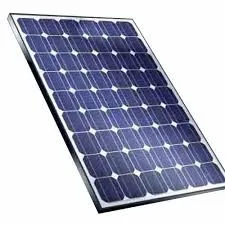what is a grid tie inverter
What Is a Grid-Tie Inverter?
A grid-tie inverter, sometimes referred to as a grid-connected inverter, is a critical component in photovoltaic (solar power) systems that connects solar panels to the electrical grid. Unlike traditional inverters that operate independently from the grid, grid-tie inverters are designed to synchronize the output of solar energy systems with the utility grid. This technology allows homeowners and businesses to efficiently use solar energy while sending excess power back to the grid.
How Does a Grid-Tie Inverter Work?
The primary function of a grid-tie inverter is to convert the direct current (DC) electricity generated by solar panels into alternating current (AC) electricity, which is the standard form used in homes and businesses. Solar panels generate electricity in the form of DC, and without a proper conversion, this power cannot be used directly by most electrical appliances or fed into the grid.
Once the solar panels produce DC electricity, the grid-tie inverter comes into play. It continuously monitors the voltage and frequency of the grid to ensure that the AC electricity it produces matches the grid's standards. This synchronization is vital because it allows the inverter to connect seamlessly to the grid without causing disruptions or safety hazards.
Benefits of Grid-Tie Inverters
1. Reduced Electricity Bills When you install a grid-tie inverter system, you can use the electricity generated by your solar panels to power your home or business. Any excess energy that you produce can be fed back into the grid, often resulting in credits or compensation from your utility provider. This can significantly reduce your overall electricity costs.
2. Net Metering Many regions have net metering policies that allow solar users to sell excess energy back to the grid. By using a grid-tie inverter, homeowners can take advantage of these policies. When your solar system produces more energy than you consume, the surplus is credited to your account, which can be used during periods when your solar system is not generating power (e.g., at night or during cloudy days).
what is a grid tie inverter

3. Environmental Impact By utilizing solar energy through a grid-tie inverter, you contribute to a reduction in greenhouse gas emissions associated with fossil fuels. Using renewable energy resources reduces your carbon footprint and supports the transition to sustainable energy.
4. Lower Maintenance Grid-tie inverter systems are generally easier to maintain than off-grid systems. Because they don’t require batteries for energy storage, the associated maintenance costs and requirements are significantly lower. Moreover, many modern grid-tie inverters come with impressive warranties and are designed for long-term reliability.
5. Expandable Systems Grid-tie systems can be easily expanded. As energy needs grow, homeowners can add more solar panels and simply connect them to the existing inverter. This flexibility allows users to scale their systems without major technical challenges.
Potential Drawbacks
While there are numerous advantages to grid-tie inverters, there are some limitations to consider. For instance, a grid-tie inverter will not function during a power outage unless combined with energy storage solutions like batteries. This is a safety precaution designed to protect utility workers who may be repairing the grid. Thus, homeowners seeking energy independence during outages might need to look into hybrid systems that incorporate energy storage.
Conclusion
In conclusion, a grid-tie inverter plays a crucial role in harnessing solar energy effectively while allowing for connection to the utility grid. It provides significant cost savings, promotes renewable energy use, and offers flexibility for future expansions. As solar technology continues to evolve, grid-tie inverters will remain a fundamental component of modern energy solutions for homes and businesses alike. Whether you are looking to reduce your carbon footprint, save on energy bills, or simply embrace the solar revolution, investing in a grid-tie inverter could be a pivotal move towards a sustainable future.
-
String Solar Inverter: The High-Efficiency Solution for Smart Solar EnergyNewsJul.14,2025
-
Revolutionizing Rooftop Energy with the Power of the Micro Solar InverterNewsJul.14,2025
-
Power Independence with Smart Off Grid Solar Inverter SolutionsNewsJul.14,2025
-
On Grid Solar Inverter: Powering the Future with Smart Grid IntegrationNewsJul.14,2025
-
Monocrystalline Solar Panels: High-Efficiency Power for the Future of Clean EnergyNewsJul.14,2025
-
Bifacial Solar Panel: A Smarter Investment for Next-Generation Energy SystemsNewsJul.14,2025







